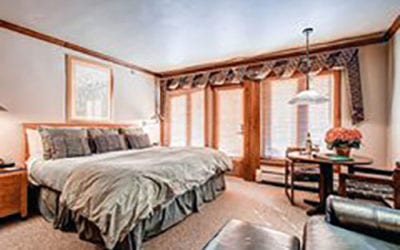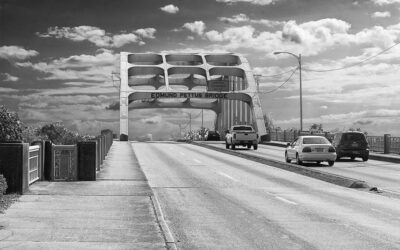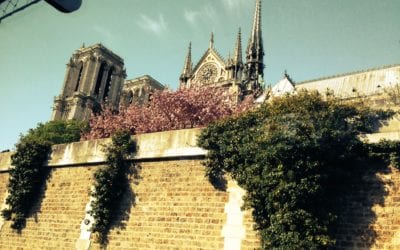I was immediately mesmerized by the beauty and tranquility of the Ming Dynasty Chinese garden through which I was strolling. Images of intricately sculpted roofs and covered walkways are reflected in jade-green pools. Growths of willow, bamboo and other delicate plant life are set against a backdrop of graceful pavilions and gazebos.
This magnificent setting could well be in China – but it isn’t. Instead, it is half a world away from in Vancouver, Canada, a city that has the second largest number of Chinese residents in North America, after San Francisco.
The Dr. Sun Yat-Sen Classical Chinese Garden is among reasons why Vancouver has been included on Conde Nast Traveler magazine’s “Best city in the Americas” list. Another is its idyllic location, nestled between the sea and towering mountains. Nature, never far away, spills into parks and green spaces that dot the city’s urban landscape like a checkerboard.
The proximity of ocean and forest provides a playground teeming with a long list of outdoor and other to-see’s and to-do’s. The diversity begins with the city’s multicultural population.
Many Chinese residents trace their ancestry back to an influx of men from China who arrived during the Gold Rush in Canada, to be followed by another immigration wave brought in for construction of the Canadian-Pacific Railroad in the 1880s. More recent arrivals have come from Thailand, Laos and other Southeast Asian countries.
Other, much earlier travelers from that area of the world also have impacted the region’s culture. Ancestors of present-day Indian bands began to arrive from Asia as long ago as 16,000 B.C. Finding abundant seafood in the bays and wildlife roaming the forests, they settled in to stay.
The influence of people of the First Nations, as those original dwellers and their descendants are known, is everywhere. Elaborately carved, brightly painted totem poles, which once guarded traditional houses and graves, today stand at a number of sites around town, serving as proud reminders of this native heritage. Sightseeing passengers board authentic cedar canoes to experience the songs and legends of the Coast Salish culture. Members of the Squamish First Nation demonstrate their heritage as they preserve centuries-old customs like spear fishing for salmon.
A good way to experience reminders of First Nations culture, along with other major sights of Vancouver, is aboard a sightseeing trolley. Passengers may remain on board for the entire two-hour tour, as drivers deliver information and unabashedly corny puns in equal doses. Or get off the trolley at any of 23 stops along the route, then reboard to continue the ride.
Stanley Park, a major trolley destination, is a Vancouver “must see.”. Sprawling over 1,000 acres, this popular urban retreat is large enough to encompass ecosystems as varied as shoreline, west coast rain forest and freshwater environments that are dotted throughout.
The park is laced by 23 miles of biking and hiking paths. My hour-long stroll led through dense woods, around marshy ponds and past fields where some of the 230 species of birds that live there or drop by during migrations joined together in a symphony of song.
Even more noisy is Granville Island, a former industrial park that was built during the 1920s. After falling onto hard times during the Depression, it was refurbished and resurrected in the 1970s. Brightly painted warehouses and Quonset huts have become homes for crafts shops, artists’ studios, clothing stores and other retail and entertainment establishments.
Much of the action is centered at the Public Market, a sprawling covered space that houses row after row of produce tables and poultry stalls, seafood vendors and specialty shops. Take-out food counters are jammed with an eclectic crowd of laborers wearing work clothes, business people sporting the latest fashions and ladies out for a day of shopping.
Fish lined up in perfect rows is so fresh it looks as if it could jump out of the displays. Sausages, locally foraged mushrooms and homemade chutneys are among items offered in more variety than I knew existed.
Here, too, the First Nations culture holds court. In addition to prints, blankets and jewelry, the Wickaninnish Gallery sells small medicine stones adorned with hand-painted crabs, lizards and other animals. Items I spotted for sale at the nearby Creekhouse Gallery ranged from simple human figures carved out of caribou antler to foot-long mother and pup soapstone seals priced far out of my range at more than $3,000.
After the hustle and bustle of Granville Island, the Dr. Sun Yat-Sen Classical Chinese Garden provides “refreshment for the heart.” Modeled after gardens created during the Ming Dynasty (1368-1644), the Vancouver version was built almost entirely of components shipped from China. Every architectural structure was perfectly fitted in the traditional manner, without use of screws, nails or glue.
Never before has the concept of balance between “yin” (female) and “yang” (male) been made so graphically clear to me. Covered walkways (yin) are offset by pavilions (yang). So complete is the immersion in tranquility that after departing through the Hall of One Hundred Rivers Courtyard, I was shocked back to reality by the clamor of the world outside.
Two other stops on the trolley tour route also intrigued me enough to disembark. Yaletown today is a far cry from its genesis as a somewhat rundown neighborhood inhabited by warehouses and industrial activity. An old railway repair shed has been transformed into a community theater. Warehouses have been restored as artists’ lofts, trendy restaurants and nightclubs.
Another neighborhood, which bears the unfortunate name Gastown, is intriguing for several reasons, including the fact that is was Vancouver’s birthplace. The colorful story is that in 1867, a riverboat captain named John Deighton showed up near what is now Stanley Park with a keg of whiskey, threw a plank across two barrels and began selling shots of the beverage to workers in nearby timber mills. Deighton’s reputation as a talkative chap who on occasion stretched the truth earned him the nickname “Gassy Jack.” The little community that rose around his place of business became known as Gassy’s Town , which over time evolved to its present derivation.
After degenerating to skid row status, the area was restored during the 1970s with brick sidewalks, cobbled streets and renovated Victorian buildings. Restaurants, bars and boutiques now attract both visitors and locals.
This is a good time to plan a visit to Vancouver. Springtime high temperatures usually hover around a pleasant 60 degrees, climbing during mid-summer into the low 70s.
For more information about Vancouver, call Tourism British Columbia at (800) 435-5622 or visit: hellobc.com.
Victor Block has been a travel writer since 1970. He belongs to the Society of American Travel Writers, North American Travel Journalists Association and the Travel Journalists Guild. He is a guidebook author and for years was a state editor of Fodor’s Travel Guides. His travel stories appear in newspapers throughout the United States and are syndicated to publications in other countries. Among honors that Victor has received are First Place in the North American Mature Publishers Association Media Awards 2007 and 2009; the East-West News Bureau’s Travelworld International Award; designation as Travel Writer of the Year by the Bahamas Government Tourist Office, and by the State of Maryland Tourist Office, and awards from the Society of American Travel Writers.
Photo: Dreamstimecom/fotomax

After gallivanting throughout the United States and to more than 75 other countries around the world, and writing about what he sees, does and learns, Victor Block retains the travel bug. He firmly believes that travel is the best possible education, and claims he still has a lot to learn. He loves to explore new destinations and cultures, and his stories about them have won a number of writing awards.




